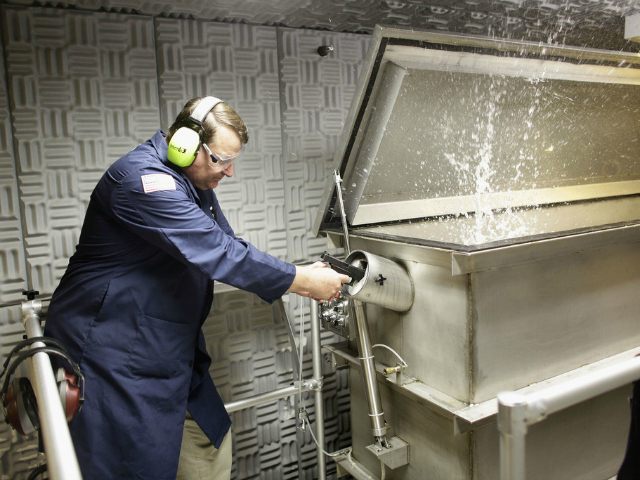With a bill, retroactive to show an ending date of October 1, the state of Maryland is ending its program to take ballistic fingerprints of firearms through shell casings after 15 years, $5 million spent, and no crimes solved.
When passed by Maryland lawmakers and signed into law by Governor Parris N. Glendening (D) in 2000, ballistic fingerprinting was sold to Maryland residents as a way for police to literally use discarded crime scene shell casings to find the gun that had fired them and, thereby, the person who possessed the gun at the time of crime. To accomplish this, Maryland began a process of requiring one spent casing from every new handgun sold in the state to be sent to the Maryland State Police. The theory was that markings on that round would be used to identify the gun should a spent casing with similar markings be found at a crime scene.
It is estimated that Maryland has approximately 300,000 such casings in an underground bunker waiting to be matched with a shell casing from a crime scene.
According to The Baltimore Sun, the pursuit of ballistic fingerprinting had already cost Maryland taxpayers $2.4 million by 2004 and a total of $5 million by 2015. Yet, no crimes were ever solved via the ballistic fingerprint requirements. Moreover, “the computerized system designed to sort and match the images never worked as envisioned… [and] in 2007, the state stopped bothering to take the photographs [of casings], though hundreds of thousands more… kept piling up in the fallout shelter.”
It should be noted that New York also took part in this folly “just a few days after Maryland.” On August 9, 2000, the New York Times reported that Governor George Pataki (R) signed a law requiring “all new handguns… to be test-fired before they are sold, so that the telltale markings they leave on bullets and shell casings can be entered into a state computer database.” Yet, New York did not wait as long as Maryland before ending ballistic fingerprinting. NY lawmakers defunded it in 2012.
In 2008, firearm examiner C. Rodney James, PhD, warned that the then-newly minted microstamping craze was the just the next step in the gun control evolution of ballistic fingerprinting and one that would prove no more successful. According to the NRA-ILA, James explained that microstamping will fall by the wayside like ballistic fingerprinting for the simple fact that it does not work.
In fact, James provided numerous reasons why it cannot work. Here are four of the many reasons he provided:
Barrels, firing pins, slides, bolts and similar parts affecting these marks can easily be replaced or altered. Without a system to “register” gunsmithing work, marks would become impossible to match…
Conversion kits for various firearms are available to permit use of a different caliber of ammunition. Currently, these are not classified as “firearms” and are sold via mail…
In a California Department of Justice study, 50 fired cases from the Federal Cartridge Corp. were compared. The cartridges had all been fired in the same gun. In microscopic examination by “experts,” 38 percent were missed! When different cartridge makes were added to the mix, still all from the same gun, 62 percent were missed. Obviously, this presents a serious problem with only one fired case or bullet from each gun.
Yet California has adopted microstamping, a so-called crime fighting tool that has already proven as unreliable as ballistic fingerprinting laws.
Follow AWR Hawkins on Twitter: @AWRHawkins. Reach him directly at awrhawkins@breitbart.com.

COMMENTS
Please let us know if you're having issues with commenting.